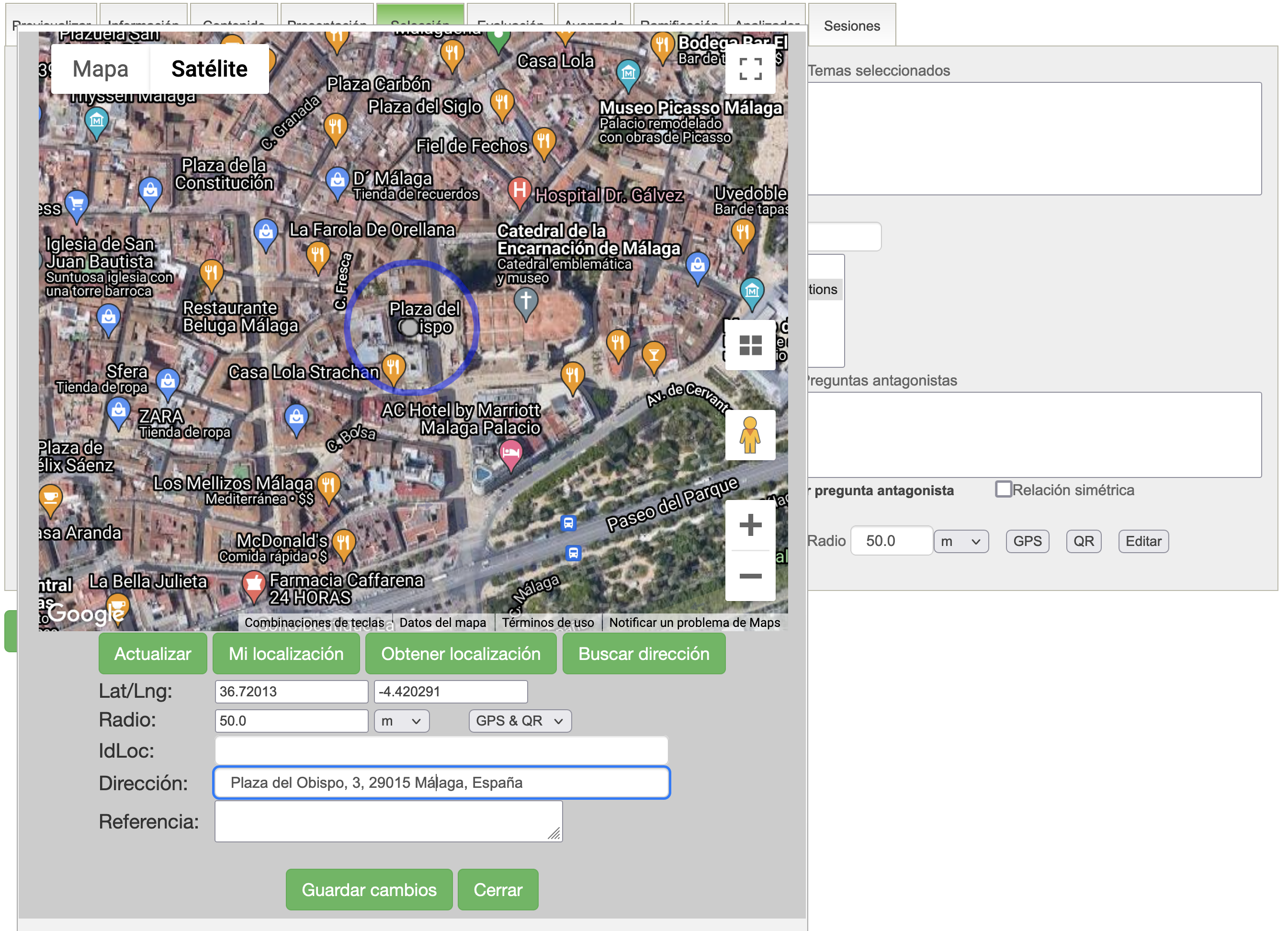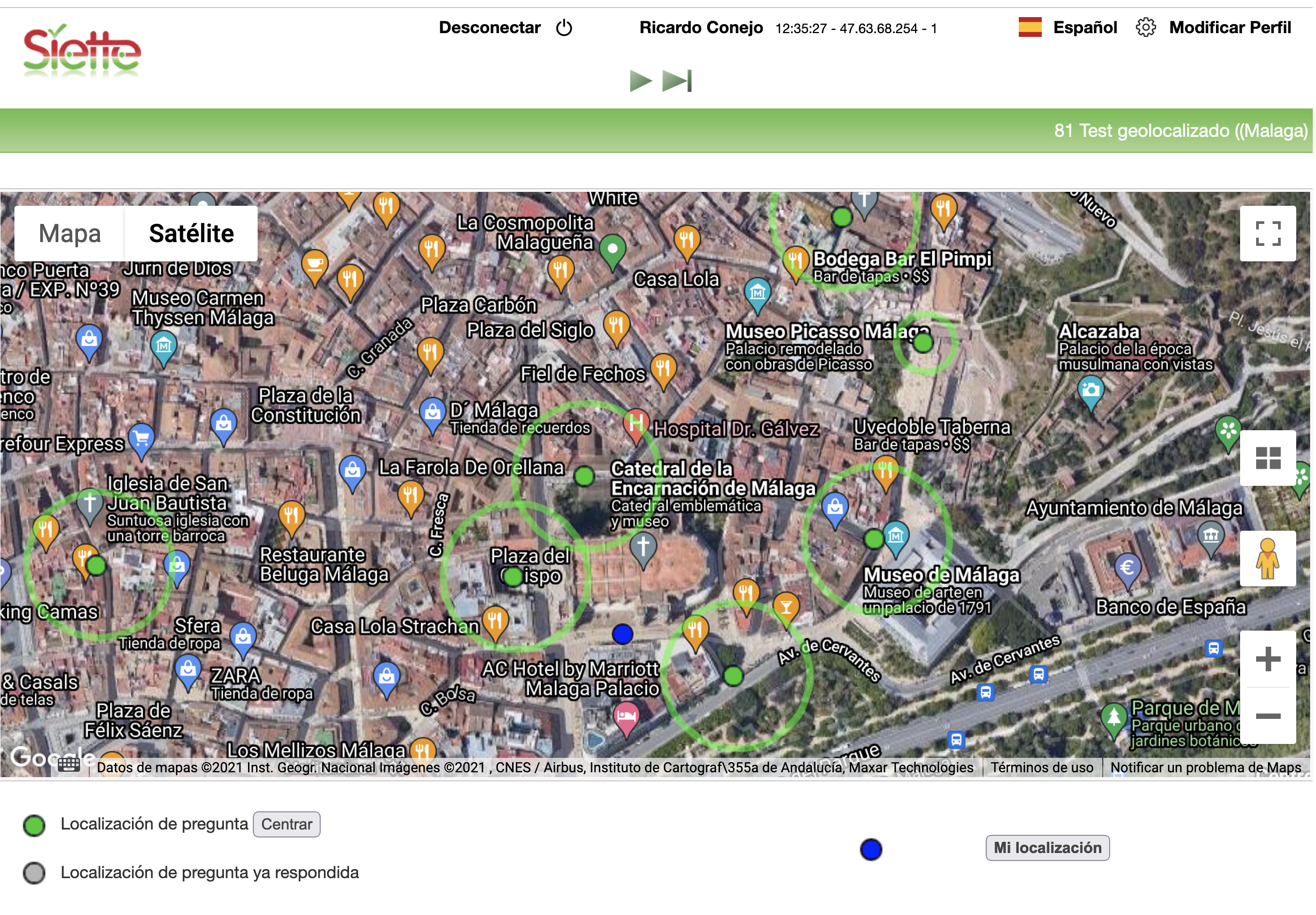Geolocated questions
It consists of assigning each question a geographical location, so that this question can only be answered if the student is located at a predetermined distance from that location. The location is defined in the Selection tab of the Questions section.
This mechanism allows to ask questions in-situ about elements that the student can view at that moment, for example, questions about the architectural style of a building, or about the specie of a tree in from of him.
A test can contain geolocated questions and non-geolocated questions. In this case, questions that are not geolocated are asked first, regardless of position. 1). Once there are no other non-geolocated questions to ask, the system will try to ask a geolocated question, depending on the position of the student. If the student is not within the radius associated with any question, a map will be displayed with the location of the questions and the student's current position. As soon as the student reaches a position associated with one of the questions, it will be presented for answering.
The image above shows the set of questions available in a test on the historic buildings in the Malaga city center. The location of the questions is shown by green circles. The current position of the student taking the test is shown by a blue dot. As questions are answered, they disappear from the map. In the case in which the same location corresponds to more than one question, all of them will be asked one after another when the student reaches the location.
An alternative to geolocated questions are the questions controlled by QR codes. In this case, it is enough to place a QR code in a specific location that would arise when the student scanned the code.
Considerations
The position obtained by the web browsers of mobile devices is based on a combination of elements, such as the operator's signal and especially the nearby Wi-Fi networks, even if it the device is not connected to them. The navigator, at least currently, cannot access the position through the device's GPS. 2).
Consequently, the precision is highly variable, depending on the operator and the proximity of Wi-Fi repeaters. In city centers and well-covered places, the accuracy can reach 10 m., but in open spaces away from buildings it can be 100m. and some kilometers if there is no Wi-Fi network.
On the other hand, fixed devices such as desktops and laptops do not always locate their position well, since this can vary if they use a VPN, a corporate network, or for many other reasons.

